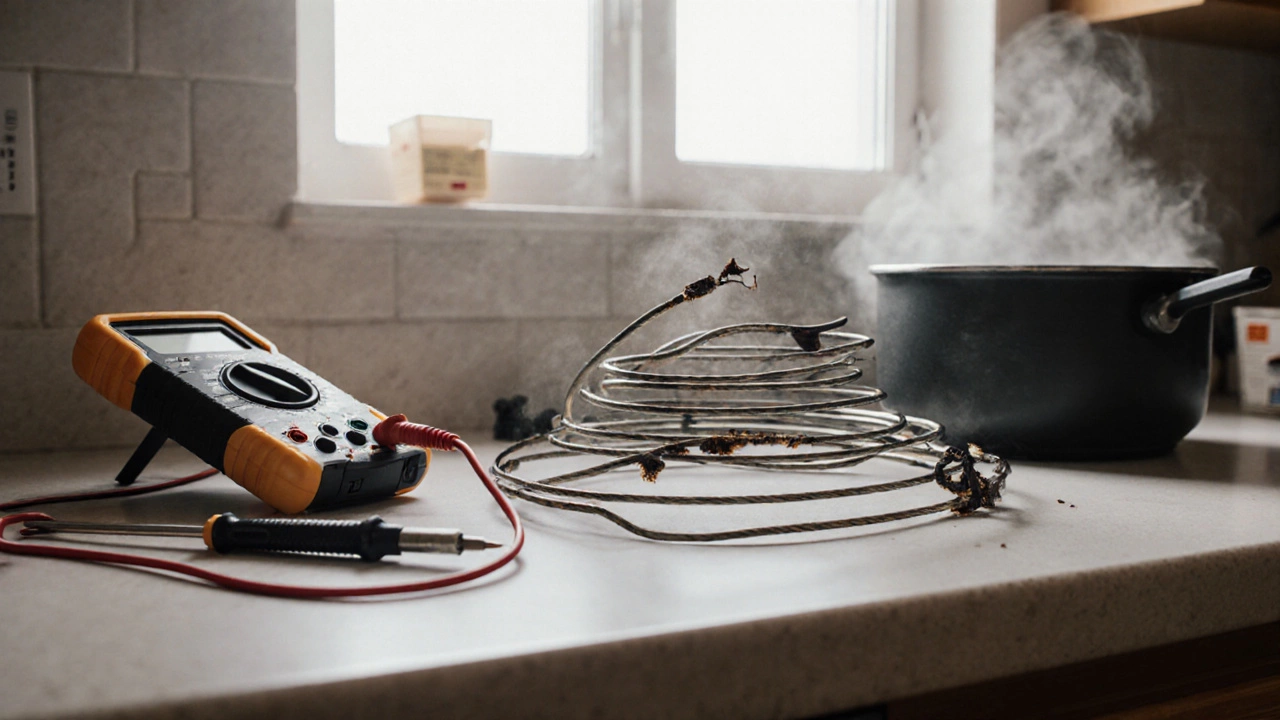When your oven won’t heat up, the culprit is often the stove element, the metal coil inside your oven that generates heat when electricity passes through it. Also known as an oven heating element, this part is one of the most common reasons your oven stops working—and one of the easiest to fix yourself. Most people assume a broken oven means buying a new one, but in over 70% of cases, it’s just the element that’s gone. Replacing it costs less than a new microwave and takes under an hour.
How do you know it’s the element and not something else? Look for visible damage—black spots, cracks, or sections that look burnt out. If the element doesn’t glow red when the oven is on, that’s another clear sign. You might also notice uneven cooking, longer preheat times, or error codes like "F3" or "E0" on digital displays. These aren’t random glitches—they’re the oven telling you the heating part has given out. The oven repair cost, the total price for fixing a broken oven, including parts and labor, can range from $50 to $200, but if you do it yourself, you’re usually paying just $30 to $60 for the part. Many people skip the repair because they’re scared of electricity, but with the power turned off and a simple multimeter test, you can confirm the issue safely.
Before you buy a new element, check your oven model number. Elements aren’t universal—even two ovens from the same brand can need different parts. You’ll find the model number on a sticker inside the door or on the back of the oven. Once you have it, search for the exact replacement. Don’t guess. A mismatched part won’t fit, won’t work, and could even be dangerous. Some people try to fix it with tape or wire—don’t. That’s a fire risk. The right element is a direct swap: unplug the old one, disconnect the wires, screw in the new one, plug it back in. Done.
It’s worth noting that if your oven is over 15 years old and you’re replacing the element, you might want to think about upgrading the whole unit. Older ovens use more energy, and newer models are 20-30% more efficient. But if your oven’s still in good shape otherwise, replacing the element is the smart move. It’s cheaper, faster, and better for the planet than tossing a perfectly good appliance.
And if you’ve already tried resetting the oven, checking the thermostat, or cleaning the vents, but it still won’t heat? You’re not missing anything. It’s almost certainly the element. The posts below walk you through every step—from how to test it with a multimeter, to where to buy the right part in Taunton, to real cost breakdowns from local repair techs. You’ll find honest advice on whether to DIY or call someone, and what to watch out for so you don’t end up with a broken oven and a bigger bill.
Posted by
Orin Trask
0 Comments

The two most common electric stove problems are a broken heating element and a failing infinite switch. Learn how to diagnose and fix them yourself with simple tools and step-by-step guidance.
read more